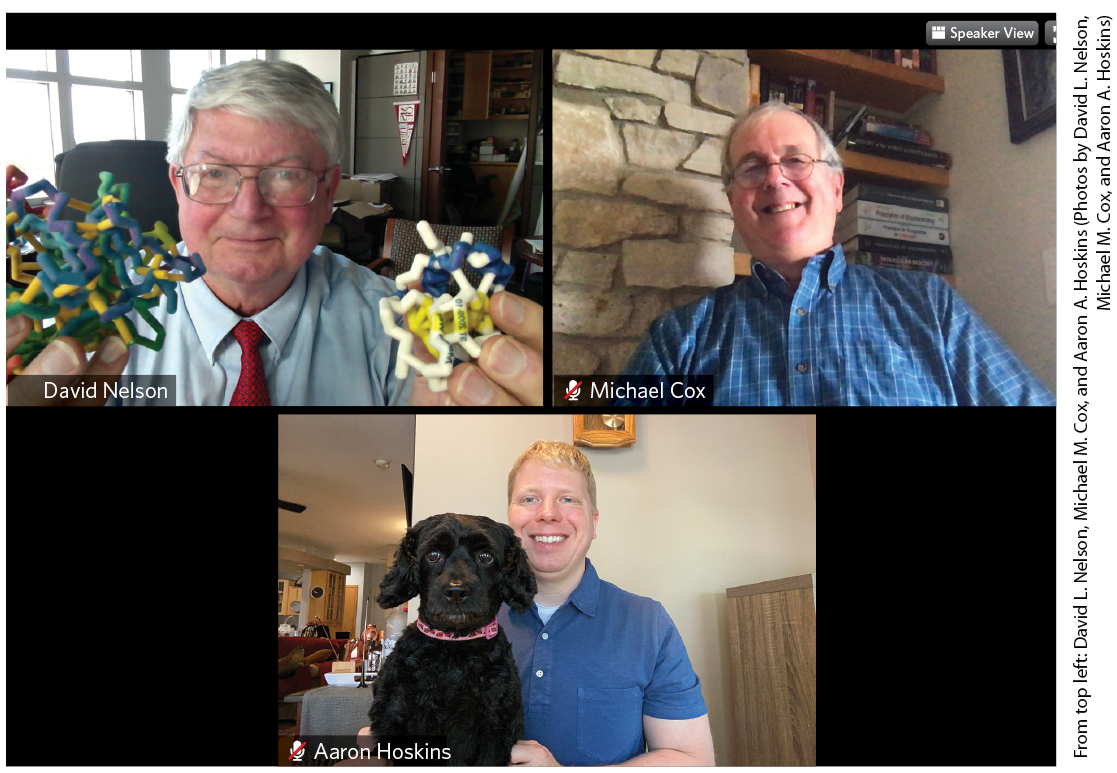About the Authors

David L. Nelson, born in Fairmont, Minnesota, received his BS in chemistry and biology from St. Olaf College in 1964, and earned his PhD in biochemistry at Stanford Medical School, under Arthur Kornberg. He was a postdoctoral fellow at the Harvard Medical School with Eugene P. Kennedy, who was one of Albert Lehninger’s first graduate students. Nelson joined the faculty of the University of Wisconsin–Madison in 1971 and became a full professor of biochemistry in 1982. For eight years he was Director of the Center for Biology Education at the University of Wisconsin–Madison. He became Professor Emeritus in 2013.
Nelson’s research focused on the signal transductions that regulate ciliary motion and exocytosis in the protozoan Paramecium. For 43 years he taught (with Mike Cox) an intensive survey of biochemistry for advanced biochemistry undergraduates in the life sciences. He has also taught graduate courses on membrane structure and function, as well as on molecular neurobiology. He has received awards for his outstanding teaching, including the Dreyfus Teacher–Scholar Award and the Atwood Distinguished Professorship. In 1991–1992 he was a visiting professor of chemistry and biology at Spelman College. Nelson’s second love is history, and in his dotage he teaches the history of biochemistry and collects antique scientific instruments.
Michael M. Cox was born in Wilmington, Delaware. In his first biochemistry course, the first edition of Lehninger’s Biochemistry was a major influence in refocusing his fascination with biology and inspiring him to pursue a career in biochemistry. After graduate work at Brandeis University with William P. Jencks and postdoctoral work at Stanford with I. Robert Lehman, he moved to the University of Wisconsin–Madison in 1983. He became a full professor of Biochemistry in 1992.
Mike Cox has coordinated an active research team at Wisconsin investigating the function and mechanism of enzymes that act at the interface of DNA replication, repair, and recombination. That work has resulted in over 200 publications to date.
For more than three decades, Cox has taught introductory biochemistry to undergraduates and has lectured in a variety of graduate courses. He organized a course on professional responsibility for first-year graduate students and established a systematic program to draw talented biochemistry undergraduates into the laboratory at an early stage of their college career. He has received multiple awards for both his teaching and his research, including the Eli Lilly Award in Biological Chemistry, election as a AAAS fellow, and the UW Regents Teaching Excellence Award. Cox’s hobbies include turning 18 acres of Wisconsin farmland into an arboretum, wine collecting, and assisting in the design of laboratory buildings.
Aaron A. Hoskins was born in Lafayette, Indiana, received his BS in chemistry from Purdue in 2000, and earned his PhD in biological chemistry at Massachusetts Institute of Technology with JoAnne Stubbe. In 2006, he went to Brandeis and University of Massachusetts Medical School as a postdoctoral fellow with Melissa Moore and Jeff Gelles. Hoskins joined the University of Wisconsin–Madison biochemistry faculty in 2011.
Hoskins’s PhD research was on de novo purine biosynthesis. At Brandeis and University of Massachusetts, he began to study eukaryotic pre-mRNA splicing. During this time, he developed new single-molecule microscopy tools for studying the spliceosome.
Hoskins’s laboratory is focused on understanding how spliceosomes are assembled and regulated and how they recognize introns. Hoskins has won awards for his research, including being named a Beckman Young Investigator and Shaw Scientist. He has taught introductory biochemistry for undergraduates since 2012. Hoskins also enjoys playing with his cat (Louise) and dog (Agatha), yoga/exercise, and tries to read a new book each week.